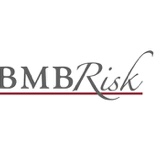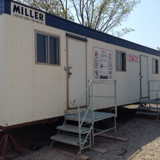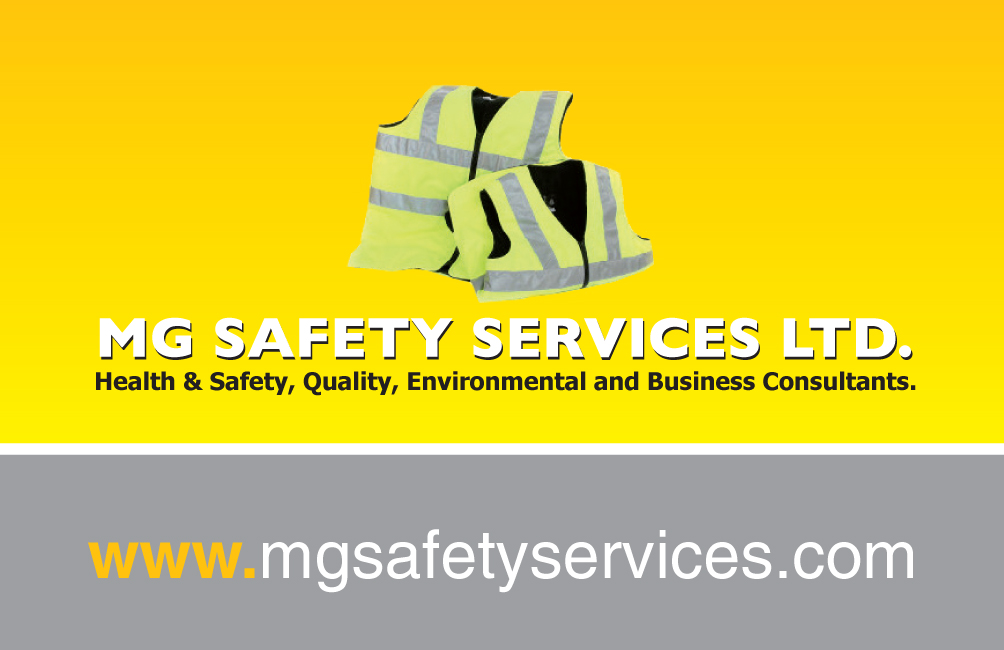Information
-
Document No.
-
Audit Title
-
Client / Site
-
Conducted on
-
Prepared by
-
Location
-
Personnel
Employer Posting
-
Is the OR OSHA poster, Job Safety and Health, displayed in a prominent location where all employees are likely to see it ?
-
Are other Posters or Notices properly displayed, such as :
-
- Safety Committee meeting minutes
- OSHA 300 Summary (Required Feb 1 to April 30)
- BOLI Poster
-
Are Fortis,subcontractor, and owner (M)SDSs readily available and accessible to all personnel?
-
Are Phase II Environmental Reports, Asbestos, Lead or other hazardous materials reports posted or accessible to all personnel?
-
Where required, are crane hand signals posted where affected employees can view them?
Record keeping
-
Are all occupational injuries, illnesses, near misses, impacts and incidents being recorded and reported as required on the OSHA Form 300 and the company policy?
-
Are employee safety and health training records maintained?
-
Are subcontractors health and training records for activities requiring training confirmed and maintained?
-
Are safety audits and inspections (with corrections) being conducted and documented?
-
Are All-Hands Safety Meetings being conducted weekly and documented with a sign-in sheet
-
Is there a method for auditing and archiving Pre-Task Plans?
-
Are Employee Information Sheets (Orientation Sheets) organized and readily accessible in case of emergency?
-
Are Daily Reports being done by superintendent?
-
Are Daily Reports being collected from subcontractors?
-
Are safety permits and lift plans compiled and archived
-
Are safety permits and lift plans developed and archived?
- Confined Space Permits
- Hot Work Permits
- Crane Lift Plans
- MOP (Method of Procedure)
- Don't Hit It Form
- LO/TO Permit
- Energized Electrical Work
Safety and Health Program
-
Is there a system in place for hazard identification and control (Pre Task Plans, Don't Hit It Forms, Job Hazard Analysis)?
-
Have all near misses and incidents been investigated?
-
Are employees encouraged to participate in health and safety matters?
-
How are they encouraged?
-
Is site specific safety orientation provided for all personnel?
Medical Services, First aid, Emergency Action Plan
-
Has an emergency medical plan been developed?
-
Are the emergency phone numbers posted?
-
Has the Crisis Management Poster been posted?
-
Is the address of project clearly posted?
-
Have maps and directions to the nearest ER and occupational clinic been posted?
-
Are first aid kits accessible to each work area?
-
Is the AED accessible?
-
Are eyewash stations accessible and current?
-
Has the marshaling area been communicated to all personnel on site or is a sign posted?
-
Is there an alarm system for excavation or other emergency action recognizable and audible?
-
Have emergency procedures been developed and communicated to all personnel on the project?
-
Do employees know their responsibilities for
-
- For Reporting
- During an Emergency
- performing CPR/First aid
- For communicating
Fire Protection
-
Is there an established procedure to control potential fire hazards and ignition sources?
-
Are ABC Fire Extinguishers located on every level and near exits no more than 100 feet apart?
-
Are Fire Extinguishers mounted or in cabinets with signs designating the location?
-
Does each Fire Extinguisher have its annual maintenance tag, quick release ties, pin and pressure gauge with the correct psi?
-
Have the Fire Extinguishers been inspected and documented for the month?
-
If employees are expected to use the fire extinguisher, have they been trained in its use?
-
If employees are not trained to use fire extinguishers, are they trained to immediately evacuate the building?
-
Where hot work is occurring, are hot work permits in use with a two hour fire watch?
-
In server rooms or clean rooms, are halotron or other clean agent extinguishers provided?
PPE ( Personal Protective Equipment)
-
Has there been an assessment of hazards that might require special PPE besides the standard company minimum PPE requirements ( hard hat, safety glasses, long pants, work boots and task specific gloves)
-
Are ANSI z87.1 safety glasses provided and worn at all times in all construction zones?
-
Are cut-resistant gloves provided and worn by employees working with sharp material or near sharp edges?
-
Are hard hats provided and worn?
-
Where workers who are working on public streets or near heavy vehicular traffic required to wear class II or class III high vis vests or garments?
-
Are workers required to wear high visibility vests or shirts, wearing them?
-
Are employees working in areas with dust, mist, vapors, fumes or other toxic environments provided with and wearing respirators or dust masks?
-
Have employees who are required to use respirators been medically evaluated, fit tested and trained in respirator use?
-
Are respirators being worn and stored properly?
-
Are employees who are drilling, root hammering, cutting or grinding at or above shoulder level wearing specta-goggles, goggles or double eye protection (glasses and face shield )?
-
Are employees utilizing personal fall protection where exposed to fall exposures 6 ft or higher, in boom lifts or on ladders near guard rails or windows?
-
Are welders wearing appropriate eye and face protection?
General Work Environment
-
Are worksites clear and orderly?
-
Add media
-
Are walking paths, points of access, ramps and stairwells clean and clear of debris with non-slip surfaces?
-
Is smoking and tobacco prohibited on site or if allowed, only in designated areas?
-
Are the minimum number of toilets and washing facilities provided ( in Oregon roughly 1 toilet facility per 20 personnel, flush toilet required on jobs $1M or more, hand washing stations must have soap and warm water and basins)?
-
Are toilets and washing facilities sanitary?
-
Is combustible scrap, debris and waste stored safely and removed from the worksite promptly?
-
Are employers providing sanitary drinking water of the correct volume when the temperature warrants it?
-
Have employees been trained on heat illness and precautions for preventing and recognizing heat stroke and heat illness, including being given adequate breaks and access to shade as required in some states ( I.e. CA, WA, etc)?
-
Are misfired or spent powder actuated cartridges kept off the ground and disposed of in a proper fashion ( a method that prevent accidental impact)?
-
Is there adequate egress lighting and task lighting for work areas?
-
Is there adequate directional signage and site specific signs?
-
Is there adequate temporary power, that is assured grounded and positioned to prevent trip hazards or damages to the cords?
-
Are all permit required confined spaces labeled or otherwise communicated about to personnel on site?
-
Do all red danger taped or yellow caution taped areas have red or yellow signs signifying the hazard?
-
Are all roof or leading edge warning lines appropriately flagged, installed and have signs that require "100% fall protection beyond this point"?
-
Has the established site speed limit been posted?
Walkways
-
Are aisles and passageways kept clear?
-
Are aisles at least 22 inches wide?
-
Are standard guard rails provided where ever aisles or walkways surfaces are elevated more than four feet above the ground or floor?
Floor and Wall Openings & Elevated Surfaces
-
Are floor holes (2 inches or greater) guarded by a secure and labeled hole cover, or by guard rails or equivalent?
-
Are wall openings greater than 30"x18" protected with guard rails or covers?
-
Are guard rails constructed to withstand 200 lbs downward and outward, with top rail at 42"+ or - 3" and mid rail midway between top rail and toe board?
-
Are toe boards ( or equivalent) provided on guard rails, scaffold platforms or near floor openings where persons may pass below opening and be exposed to falling objects?
-
Are elevated surfaces ( 6 feet or more above floor) provided with standard guard rails?
-
Are permanent means of access or egress provided to elevated surfaces ( stairwell, personnel lifts, ladders), preferably at two locations?
-
Is material or equipment on elevated surfaces piled, stacked or racked in a manner to prevent it from tipping, falling, collapsing, rolling or spreading?
Exit or Egress
-
Are all exits marked with an exit sign and illuminated with egress lighting?
-
Are all doors, passageways or stairways that are locked, blocked, or which do not lead to exits marked with clear large signs that state "NOT AN EXIT" ( for example, a fire escape door to which the fire escape has been removed, must be labeled "NOT AN EXIT"
-
Are exit signs provided with the word "EXIT" in lettering at least 6 inches high and the letter struck at least 3/4 inch wide?
-
Are all exits kept free of obstructions and unlocked?
-
Are there sufficient exits to provide escape in case of emergency?
Portable Ladders
-
Has the project promoted a "ladders last" approach to accessing work at heights such as opting for scissor lifts, aerial lifts or scaffolds rather than ladders?
-
Are ladders in good condition, joints between steps and side rails tight, all hardware and fittings securely attached and movable parts operating freely without binding or undo play?
-
Are all ANSI and OSHA required ladder decals present and legible?
-
Are non-slip safety feet present on extension and straight ladders?
-
Are employees facing ladder when ascending or descending?
-
Do employees avoid carrying tools and materials up or down ladders?
-
Are employees using step ladders in the open position, staying within the rungs of the ladder ( belt buckle rule) and not using the top two steps as a step?
-
When a ladder is used to gain access to an elevated platform ( roof, trench), is it a straight or extension ladder, secured top and bottom and elevated three feet above the landing?
-
Are ladders used on level surfaces or otherwise prevented from tipping or slipping?
-
Where ladders are used near guard rails, stair rails or wall openings, is the employee utilizing personal fall arrest or otherwise protected from falls to lower levels?
-
Are employees trained to inspect ladders and prohibited from using ladders with damage, missing steps, broken rungs, damaged side rails, and broken or bent braces?
Hand Tools, Power Tools and Equipment
-
Are all tools and equipment ( both company and employee owned) in good working condition?
-
Are rotating or moving parts guarded to prevent physical contact ( peanut grinder, chop saws, cut off saws, crushers etc)?
-
Are all portable fans, task lighting and string lights provided with full guards?
-
Does hoisting equipment and rigging have their rating tags or labels?
-
Are all temporary electrical cords and equipment protected with GFCI ( ground fault circuit interrupters)?
-
In addition to GFCI protection have all extension cords and tool cord been inspected under the quarterly assured grounding program and been labeled with the appropriate color tape (white=jan,feb,mar, green=apr,may,jun, red=jul,aug,sep, orange=oct, nov, dec)?
-
Are hydraulic and pneumatic hoses in good condition?
-
Are signs posted where powder actuated tools and lasers are in use?
-
Are work and electrode leads free of damage or wear?
-
Are shields used during welding and fire blankets in place if combustibles are located near by during welding operations?
-
Have scissor lifts, forklifts and boom lifts been inspected for the day?
-
Is the right tool being used for the job?
-
Are workstations/cut stations set up at waist level ( on saw horses, tripods, etc)?
-
Are compressors equipped with pressure relief valves and pressure gauges and is the belt drive guarded on all sides?
-
Are employees safely handling compressors by not directing air at themselves or others?
The Work Environment
-
Is adequate egress lighting provided at doorways and hallways?
-
Do trades have adequate task lighting for their activities?
-
Are personnel protected from chemical exposures or dust through ventilation, respirators, isolation or barriers?
-
Are proper precautions taken by employees abating asbestos or remediating lead?
-
During demo, has HVAC system been isolated?
-
Have employees been trained to recognize symptoms and precautions for heat stress, heat illness?
-
During seasonal high heat, are adequate water, breaks and shade provided?
-
Are exterior access ways clear of ice and snow with de-icer or sand provided?
-
In noisy areas (above 85 dB) are signs posted and ear protection provided/required?
-
Are flammable chemicals stored in proper cabinets with 25 lbs fire extinguisher in the area?
-
Are pressurized gas cylinders stored, secured, with regulators off and protective caps in place?
-
Are oxygen cylinders stored at least 20 ft apart from acetylene cylinders or other fuel cylinders ( or with a five foot wall with 1 hour fire rating between them)?
Electrical Safety
-
Are Method of Procedures (MOPs) in place prior to system energizing, de-energizing, charging, or commissioning (including battery/UPS systems)?
-
When electrical systems with the potential to be energized are serviced, maintained, adjusted or installed, are appropriate breakers, switches, emo buttons opened and locked and tagged out by all personnel working downstream of the potential?
-
Are electrical, mechanical, structural lines, cables or members located ( overhead, underground, underfloor, other side of walls) using GPR, X-ray, private locates, and visually prior to digging, core drilling, saw cutting or demolition?
-
Has the "Don't Hit It" form been completed and signed prior to saw cutting, core drilling, boring, excavation or demolition?
-
Has the LO/TO program been audited periodically?
-
Are all personnel involved with LO/TO provided with individually keyed personal locks and tags?
-
Are employees required to keep personal control of their key(s) while safety locks are in use?
-
Have all redundant power sources been considered ( and is single line drawing available) ?
-
Have all personnel working in electrical rooms been trained in electrical awareness?
-
Are personnel following NFPA 70e protocol when working in or near energized electrical system or electrical systems with the potential to be energized?
-
Is sufficient access and working space provided around electrical equipment to permit ready and safe operation?
-
Are electrical enclosures (with potential or actual energy) such as switches, receptacles, panels, battery cabinets and junction boxes provided with tight fitting covers, dead fronts and plates?
-
Are panels with potential to be energized or which are energized during commissioning labeled with signs alerting others to the danger of it being energized?
Material Handling
-
Are materials and trash bins stored orderly, with easy methods of handling without strain ( i.e.. on pallets, carts, or rollers)?
-
Are chutes equipped with side boards or covers of sufficient heights to prevent materials from falling off?
-
Are personnel using material handling aids to lift or transfer heavy awkward objects?
-
Are hooks with safety latches or other devices used when hoisting materials so that slings or loads don't accidentally slip?
-
Are securing chains, ropes, chokers, sling or rigging adequate and in good condition?
-
Where loads are being hoisted or lifted overhead, is area below danger taped or otherwise demarked to prevent others from passing under suspended loads?
Scaffolds and Stair Towers
-
Is there a competent person identified for the scaffold?
-
Is the scaffold properly tagged?
-
If not, has the competent person communicated to the users?
-
Are the platforms fully planked between the uprights?
-
Do all vertical members rest on base plates?
-
If the scaffold is on a soft surface, are mud sills in place?
-
Is the scaffold plumb level and square?
-
Are top rails and mid rails installed on all open sides at levels in use above 6 ft and are they installed at the correct height?
-
Is the scaffold secured from tipping if it exceeds a height:width ration of 1:4 (1:3 for baker scaffolds)
-
Is the scaffold correctly braced?
-
Are toe boards installed ( or other means of preventing falling objects) in areas where personnel might pass under scaffold?
-
Does the scaffold have ladders or steps provide to access any change in elevation greater than 2 feet?
-
Is the competent person inspecting and documenting the scaffold daily, prior to use or when conditions change?
-
If the scaffold is taller than 125ft, has a registered professional engineer designed the scaffold?
Excavations
-
Has the competent person been identified for the excavation?
-
Has the competent person classified the soil? If not assume Type C.
-
Have locates and as-built review been conducted of underground. Installation?
-
Was the Don't Hit It Form completed prior to digging?
-
If underground installations are exposed, are they protected, supported or removed while excavation is open?
-
Are excavations 5 feet or deeper (which will be accessed by personnel) protected from collapse by sloping, benching, shielding, or shoring? ( 4 ft or deeper in WA)
-
Are stairways, ramps or ladders positioned so that travel distance is no greater than 25 ft?
-
Are ladders secured at the top and when possible at the bottom as well?
-
Are personnel who are exposed to traffic wearing reflective, high visibility vest?
-
Are employees prohibited from standing underneath loads handling by digging equipment?
-
Are guard rails provided on walkways or bridges over excavations that are 6 ft or deeper?
-
Are excavations that are accessible to the public adequately barricaded or covered when unattended?
-
Are daily inspections being performed and documented by the competent person ( or when conditions change)?
-
Have all shielding (trench boxes, etc) been designed by a registered professional engineer? Is there a copy of the engineering document?
-
Are all excavation within the job site or accessible to the public barricade with tape and signs?
Forklifts
-
Has the forklift been inspected?
-
Is the operator trained?
-
Is the operator using the seatbelt?
-
Are personnel staying away from the blind spots and making eye contact with the operator?
-
Is the operator driving at appropriate speeds?
-
Is the forklift in good repair?
-
Is the load within capacity of the lift?
-
Does the forklift have a back up alarm, horn, and fire extinguisher?
-
Does the forklift have adequate overhead protection?
Confined Space
-
Is there a written confined space program?
-
Have all permit require confined spaces been identified to all personnel on site?
-
Have all personnel who might encounter or travel near a permit required confined space been instructed in the hazards and prohibitions from entering them?
-
Have all the elements of a confined space program been met regarding assessment, permit, training, ventilation, evaluation, controls, access, communication, and rescue?
-
Are all attendants CPR, first aid trained?
-
Has rescue/retrieval equipment been tested?
Cranes and Hoists
-
Has a crane lift plan been completed for the crane activity?
-
Has a copy of a third party annual inspection on the crane been included in the crane plan?
-
Has a copy of the crane operators certification been included with the plan?
-
Has a copy of the riggers certification been included with the plan?
-
Has a copy of the certificate of insurance been provided with both our company and client listed as additionally insured?
-
Have 125% proof test documents been provided for all spreader bars?
-
Does the lift plan include capacity, radius elevation, weights and other pertinent information?
-
Has a daily inspection on the crane and rigging been completed and documented?
-
Has the entire swing radius been danger taped or barricaded?
-
Are tag lines on the load?
-
Is the crane level( within 5 degrees) with outriggers out and cribbed?
-
Is the operators manual, fire extinguisher and crane hand signals available, posted or accessible?
-
Does the bellman ( signalman) have clear line of sight, communication and no fall exposures?
-
Is crane equipped with anti-two block?
-
Is there sufficient lighting, wind and weather conditions to safely operate the crane?
-
Has a determination been made to ensure that no part of the load or crane could get closer than 20 ft to a energized power line?
-
Correction Needed, Person responsible, Date Due
-
Correction Needed, Person responsible, Date Due
-
Correction Needed, Person responsible, Date Due
-
Correction Needed, Person responsible, Date Due
-
Correction Needed, Person responsible, Date Due
-
Correction Needed, Person responsible, Date Due
-
Correction Needed, Person responsible, Date Due
-
Correction Needed, Person responsible, Date Due
-
Correction Needed, Person responsible, Date Due











